
EASY CLEANING AND CARE INSTRUCTIONS
Wellness program for your products - basically all our equipment is made of user-friendly and durable materials. Here are some valuable tips for the easy cleaning and maintenance of your Hohenloher products.
MELAMINE COATED SURFACES
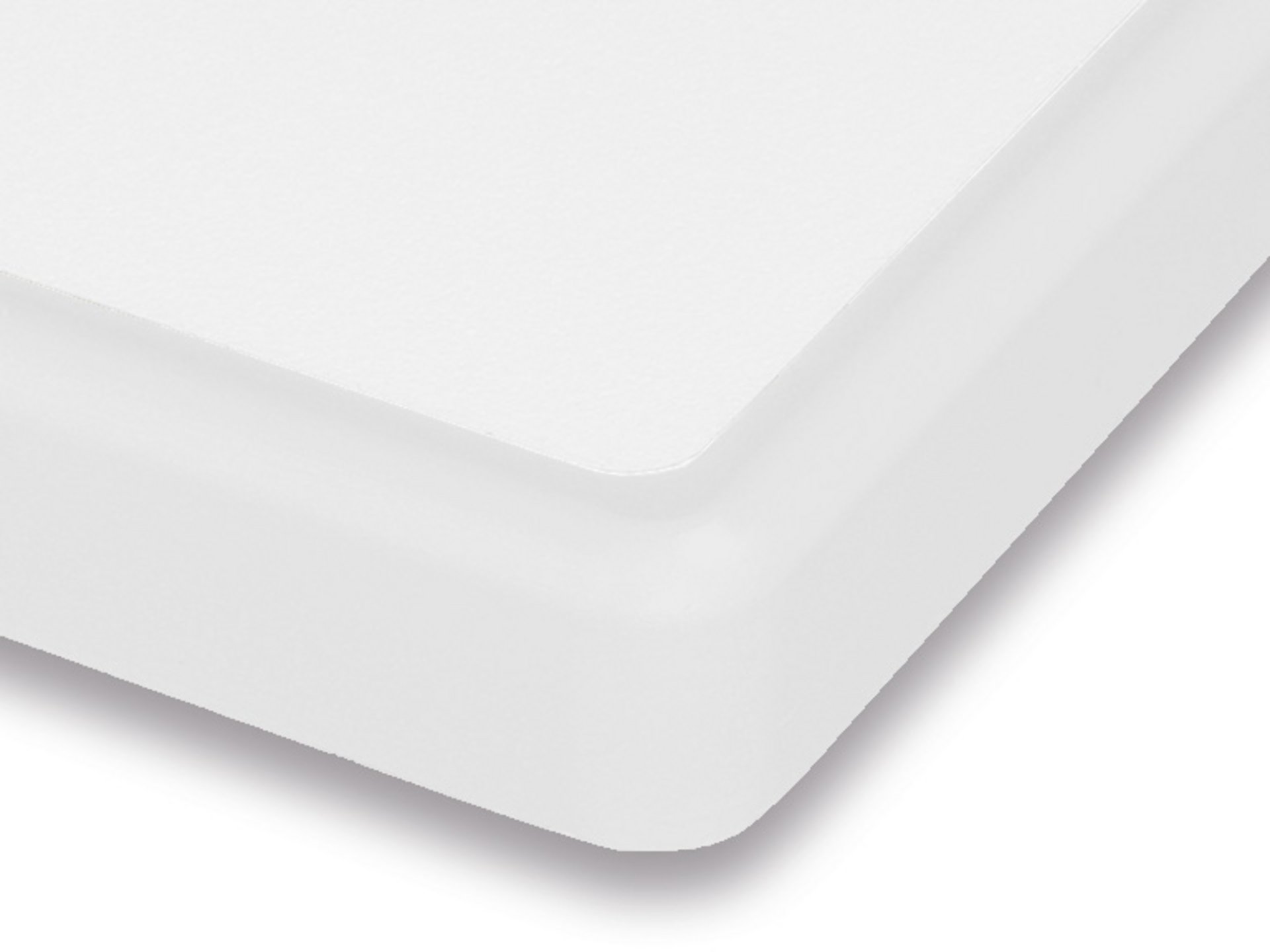
- Easy to clean due to non-porous surface
- Wipe off light soiling with a damp, soft cloth, rag or sponge
- Clean heavier soiling with water and detergent or soap solution; completely remove excess water by wiping off
- Always wipe edges dry
- Strong or scouring detergents damage the surfaces; do not use any cleaning agents that contain abrasive additives, such as whiting or similar
- Do not use any hard, rough cleaning utensils made from plastic, microfibers or steel wool
- Clean lime stains or lime edges with warm, diluted acetic‐/citric acid (10 percent) and wipe off with clean water
- Remove residues of pens, such as ballpoint pen or felt pen, before they dry out
VENEERED AND LACQUERED SURFACES
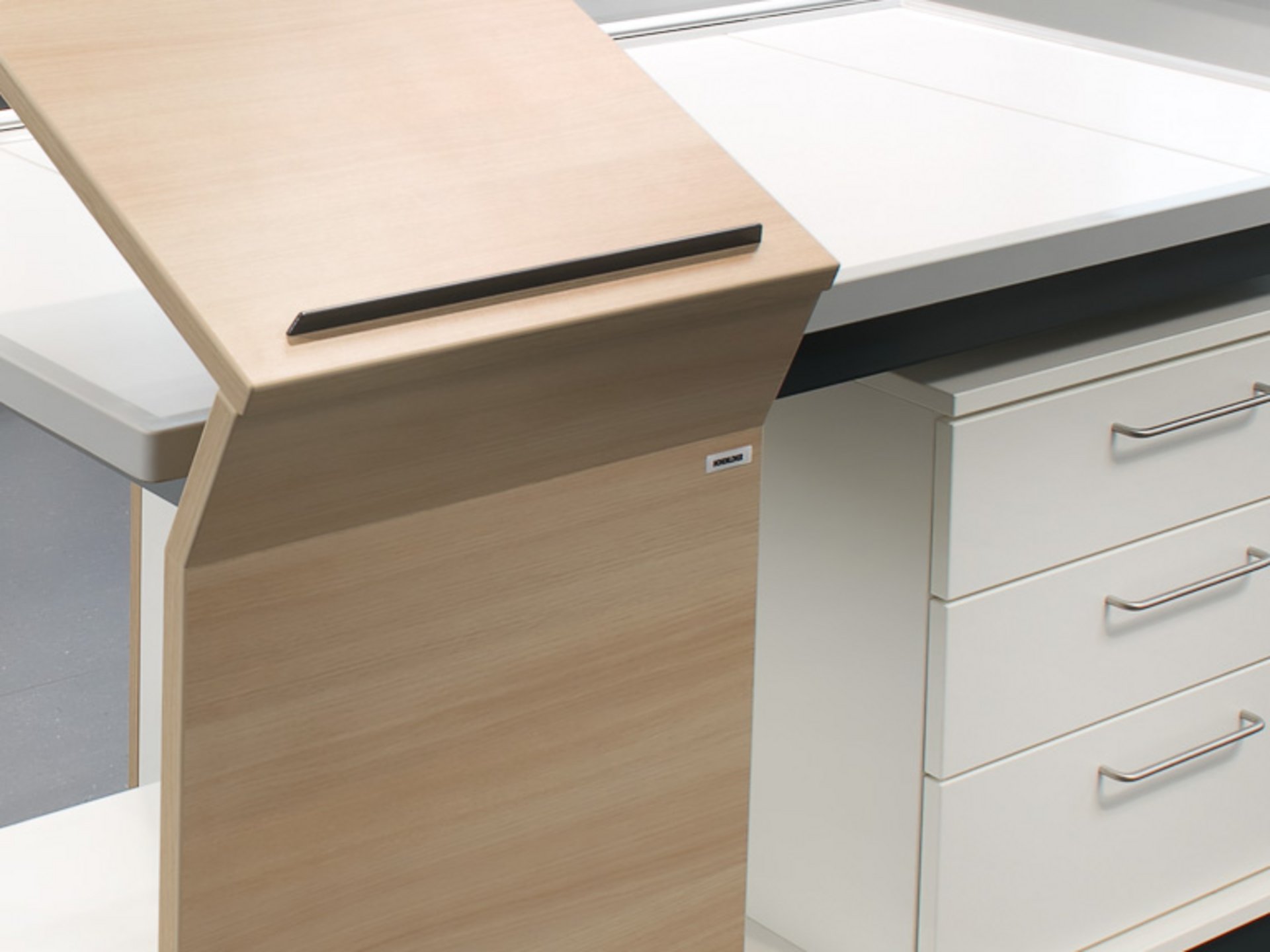
- Easy to clean due to UV‐cured acrylic resin lacquer coating (UV water-based lacquer)
- Wipe off light soiling with a damp, soft cloth, rag or sponge and wipe dry
- Treat heavier soiling with water and a little household detergent, wipe off with clean water and wipe dry
- Strong or scouring detergents and solvents damage the surfaces; do not use any cleaning agents that contain abrasive additives, such as whiting or similar
- Do not use any hard, rough cleaning utensils made from plastic, microfibers or steel wool
- Pointed, sharp-edged objects and substances containing solvents can damage the lacquer
POWDER-COATED SURFACES
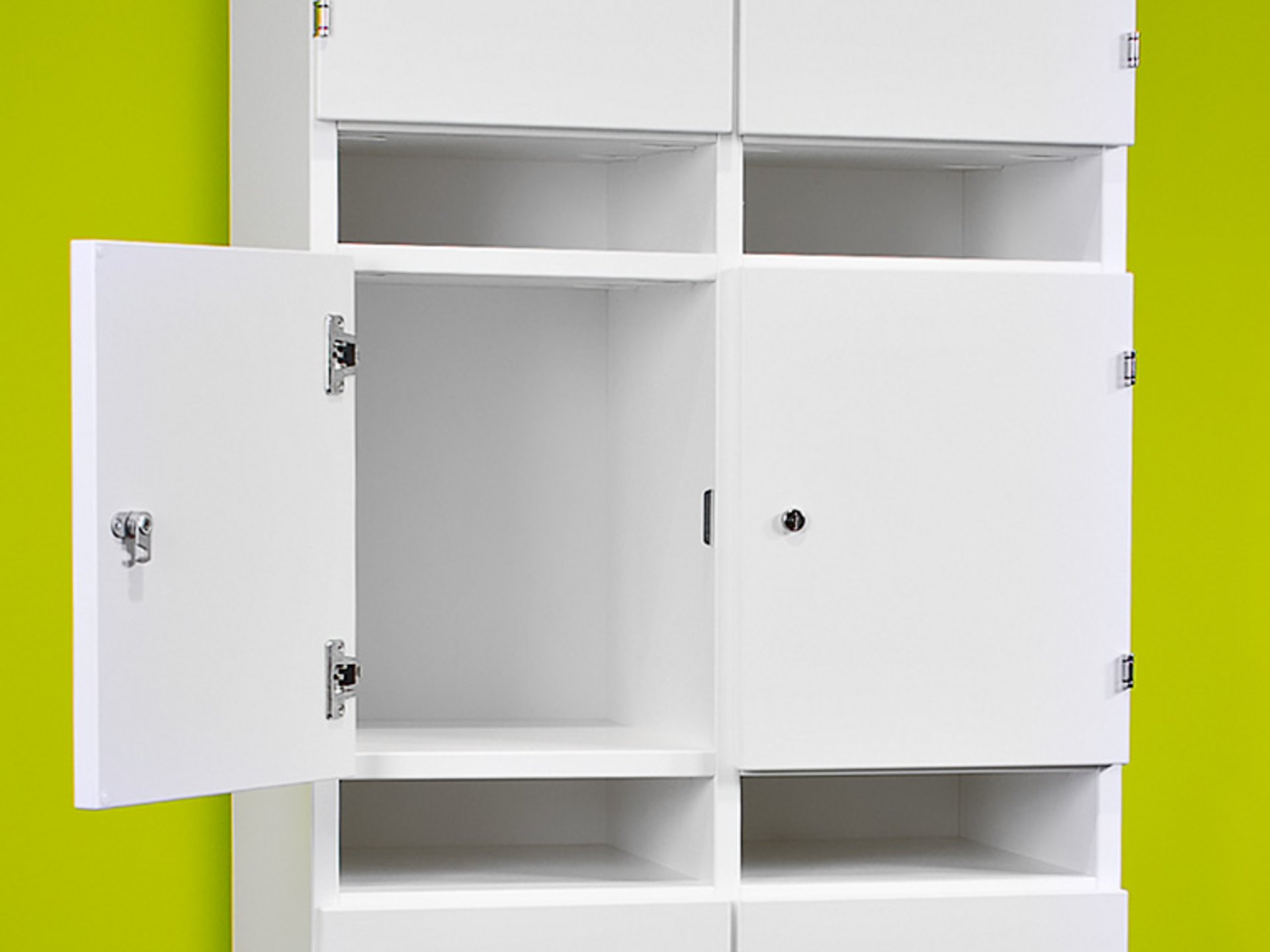
- Easy to clean due to powder-coated stove-enamel finish
- Wipe off light soiling with a damp, soft cloth, rag or sponge
- Treat heavier soiling with water and a neutral cleaning agent, wipe off with clean water
- Strong or scouring cleaning agents damage the surfaces; do not use any acidic or alkaline detergents, do not use any organic solvents or any cleaning agents that contain abrasive additives, such as whiting or similar
- Do not use any hard, rough cleaning utensils made from plastic or steel wool
POLYPROPYLENE (PP) SURFACES
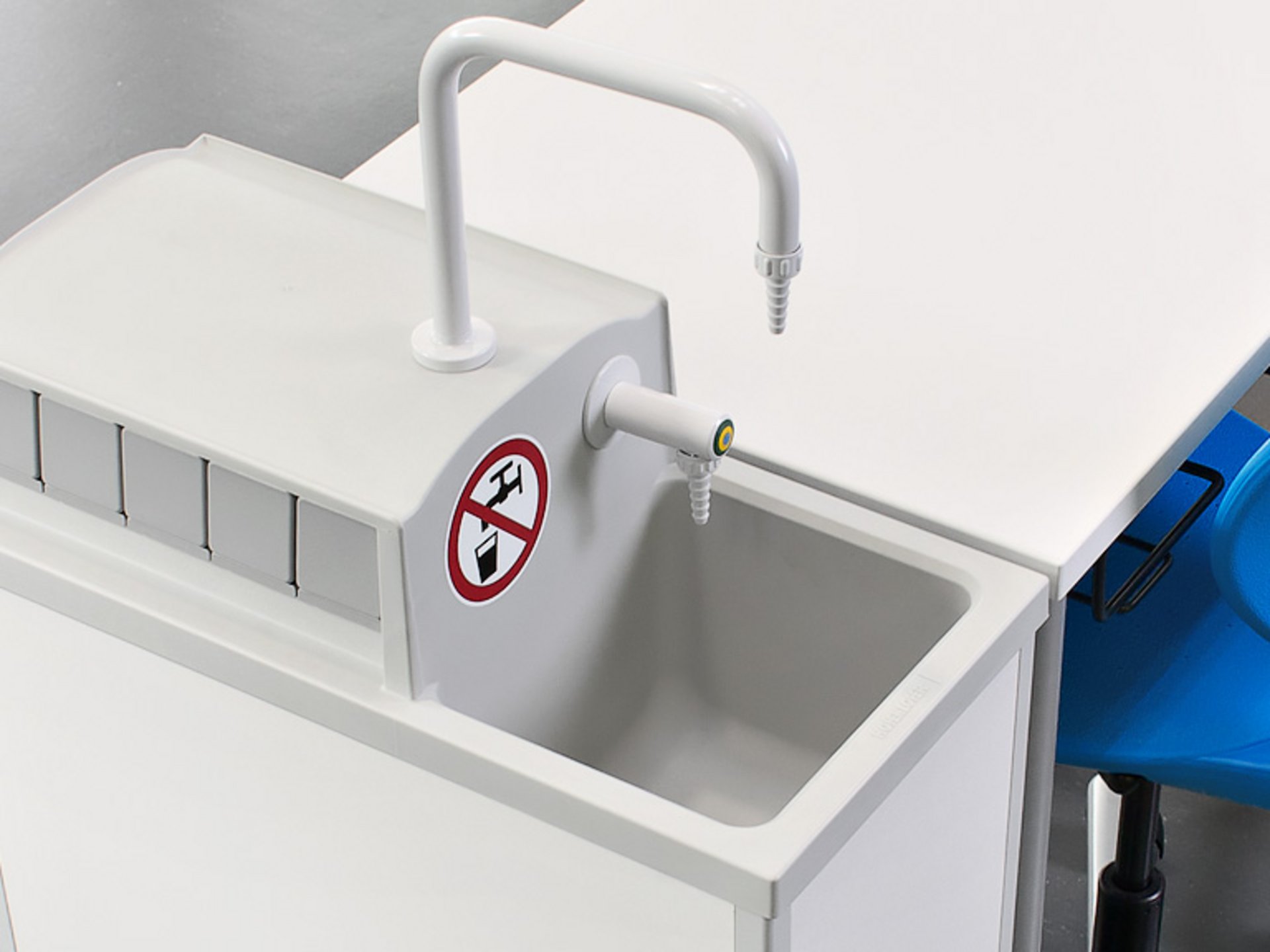
- Easy to clean due to robust, through-coloured PP material
- Wipe off light soiling with a damp, soft cloth, rag or sponge
- Treat heavier soiling with water and a neutral cleaning agent, wipe off with clean water
- Strong or scouring detergents damage the surfaces; do not use any cleaning agents that contain abrasive additives, such as whiting or similar
- Do not use any hard, rough cleaning utensils made from plastic or steel wool
- Remove residues of pens, such as ballpoint pen or felt pen, before they dry out
GLASS SURFACES
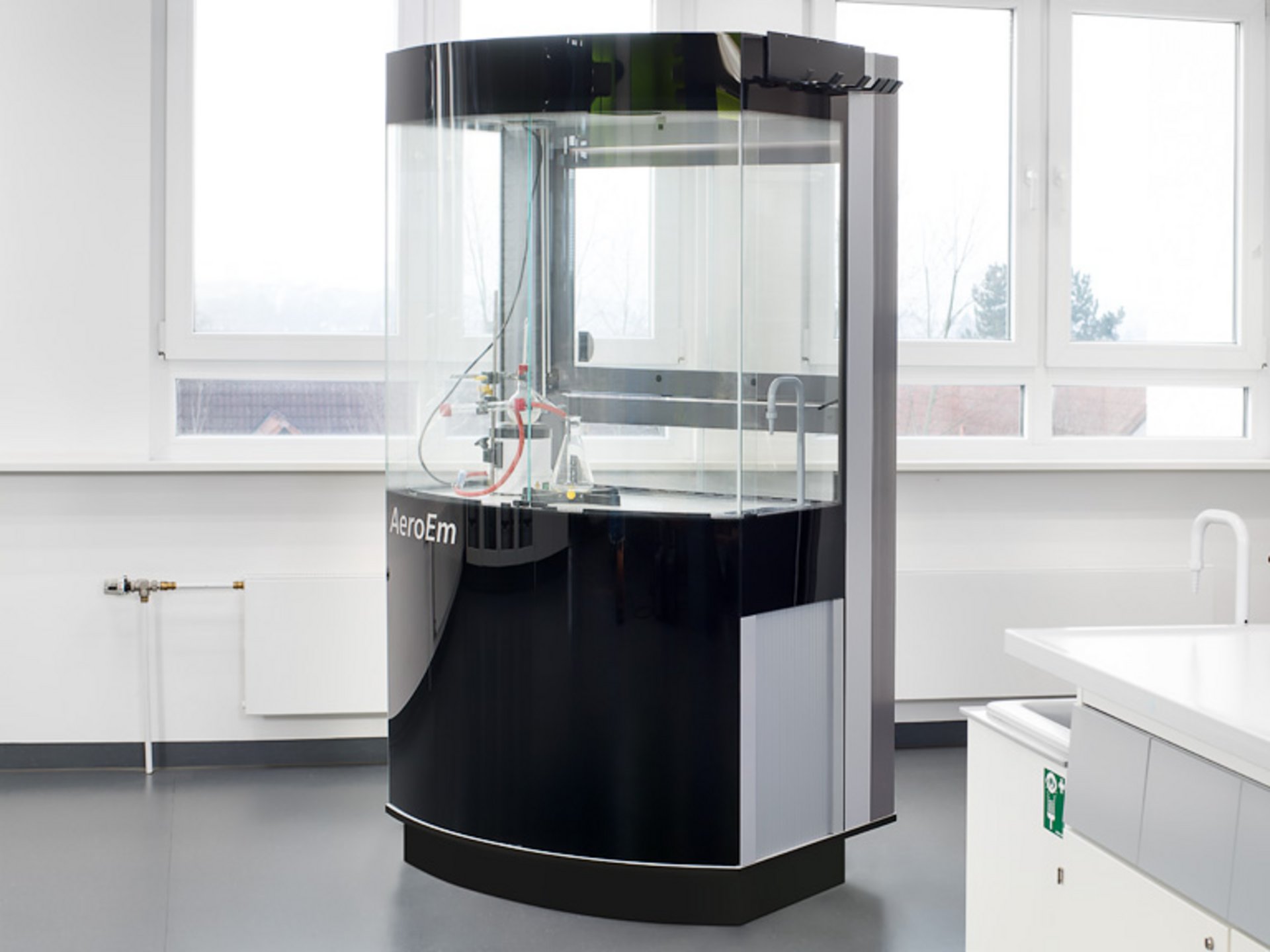
- Easy to clean due to hard, easy-clean surface
- Wipe off light soiling with a damp, soft cloth, rag or sponge and wipe dry
- Treat heavier soiling with common glass cleaners, wipe off with clean water and wipe dry
- Strong or scouring detergents damage the surfaces; do not use any cleaning agents that contain abrasive additives, such as whiting or similar
- Do not use any hard, rough cleaning utensils made from plastic or steel wool
- After cleaning, pull down the glass surface with a rubber-lipped wiper
FABRIC SURFACES
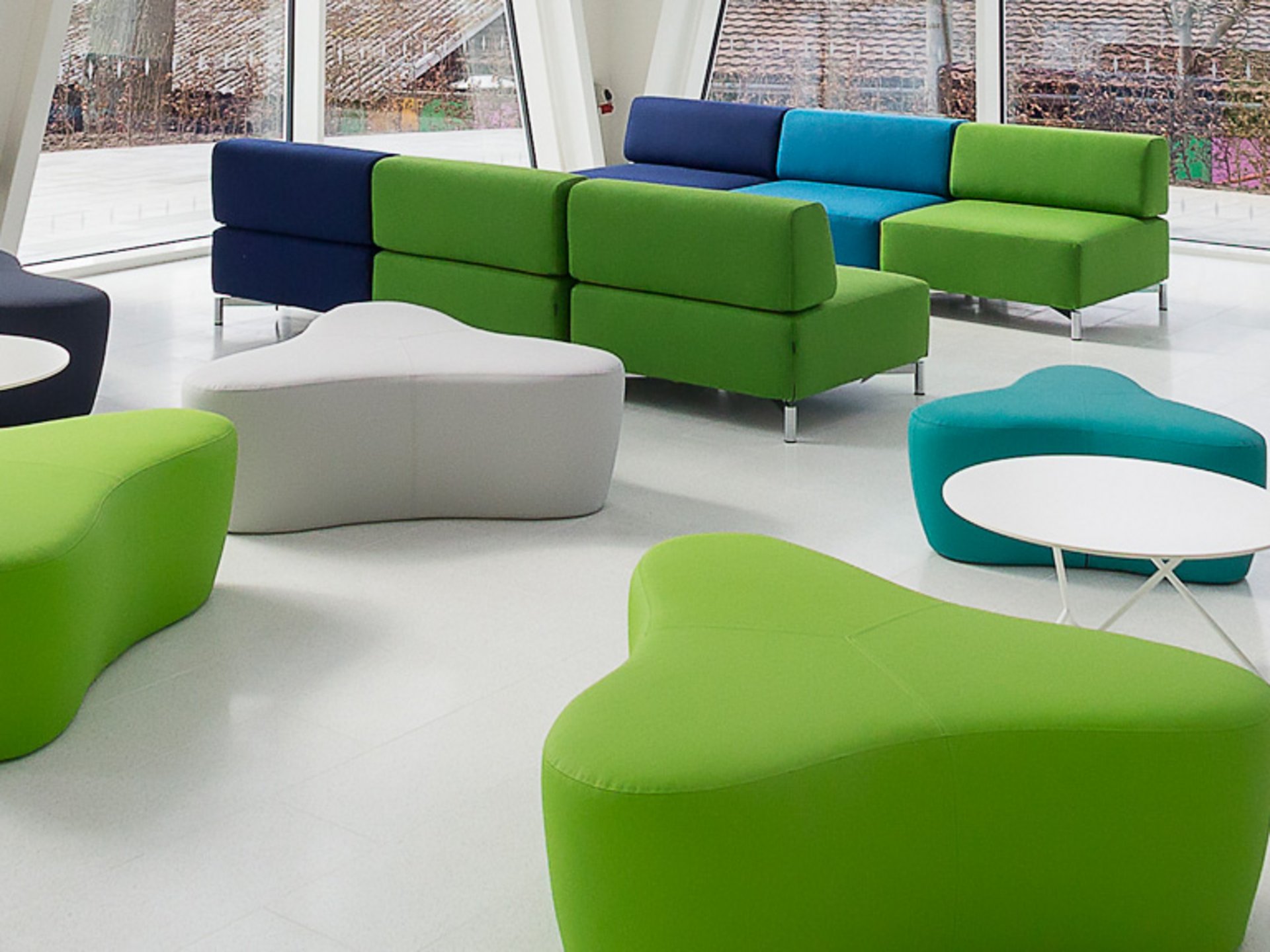
- Brush out light soiling with a soft brush or vacuum with an upholstery nozzle
- In the case of heavier soiling, definitely perform a test clean at a concealed place before removing a stain, and check for colour fastness and changes to the surface
- If necessary call in a professional cleaning company
- Dab stains with an absorbent cloth as soon as possible after they occur
- In the case of residues, soak a white, soft cloth with stain remover and treat the stain, working from the edge towards the middle; if necessary apply diluted carpet- or upholstery shampoo as post-treatment
- Never apply cleaning agent directly onto the cover; the upholstery fabric can be damaged through strong rubbing
ARTIFICIAL LEATHER SURFACES
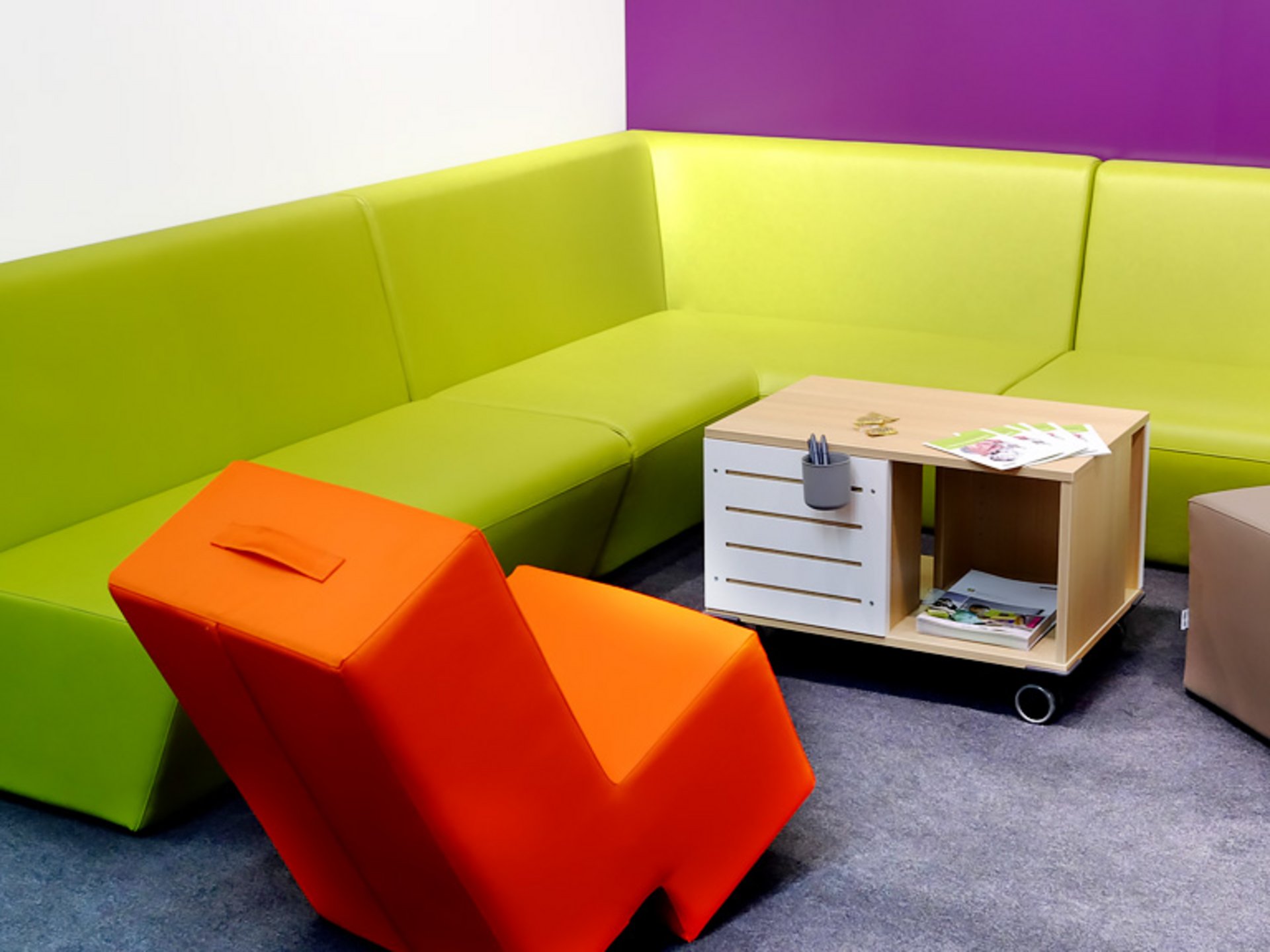
- Easy to clean due to resilient surface
- Wipe off light soiling with a damp, soft cloth, rag or sponge and wipe dry
- Treat heavier soiling with water and common dishwashing liquid or special artificial leather cleaning agent, wipe off with clean water and wipe dry
- Strong or scouring cleaning agents damage the surfaces; do not use any alcohol or petrol; do not use any cleaning agents that contain abrasive additives such as whiting or similar
- Do not use any hard, rough cleaning utensils made from plastic or steel wool
- The artificial leather can be damaged through strong rubbing
WHITE STEEL ENAMEL SURFACES
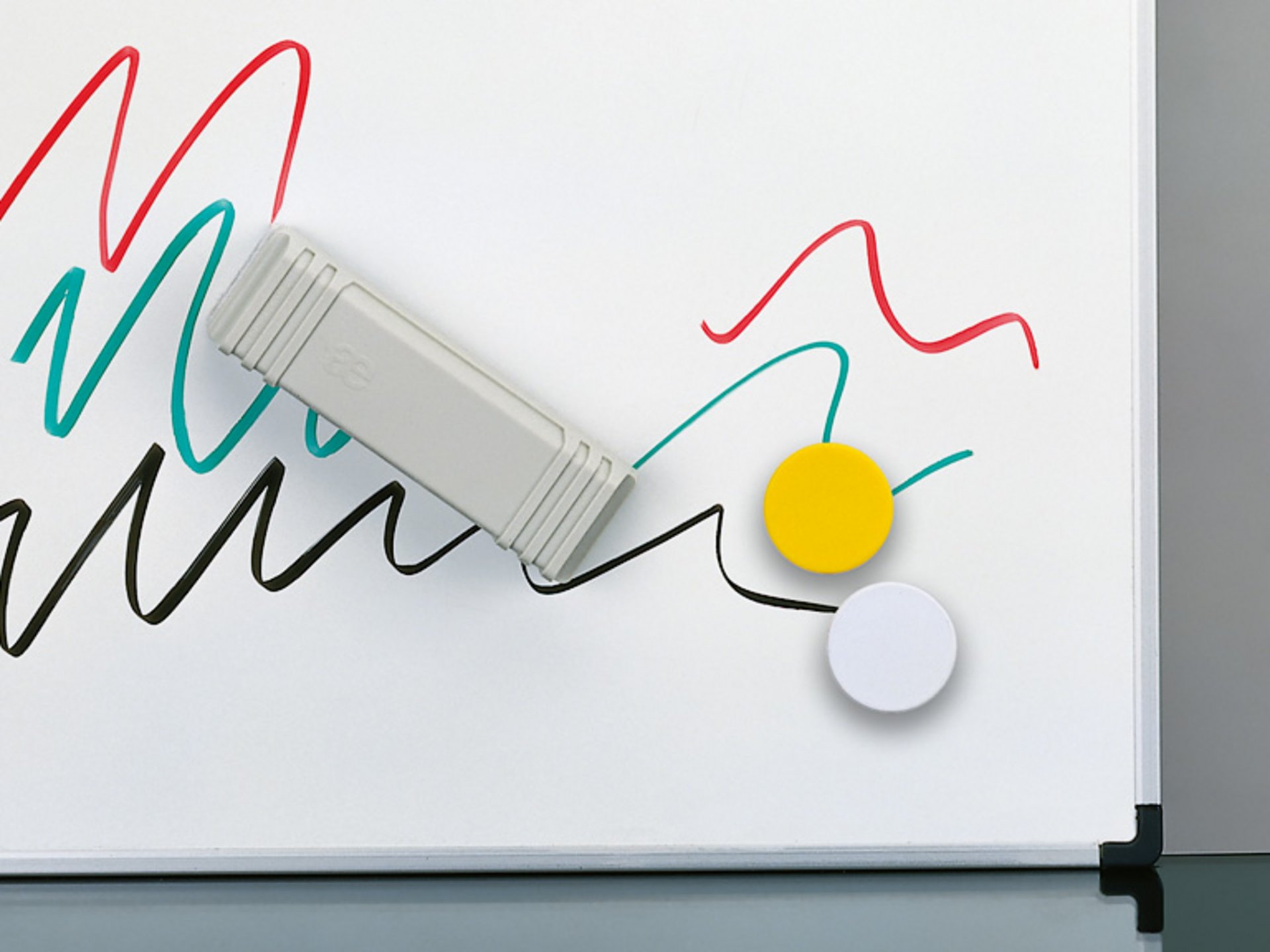
- Easy to clean due to hard, easy-clean surface
- The use of Hohenloher board markers, board erasers and cleaners secure a long useful life
- Treat light soiling with water and neutral cleaning agent or special whiteboard cleaners, wipe off with clean water and wipe dry; after cleaning, in addition rub aluminium edgings dry
- Clean heavier soiling, lime stains or lime edges with warm, diluted acetic‐/citric acid (10 percent) or clean with vinegar-based cleaner and wipe off with clean water and wipe dry
- Remove residues of pens, such as ballpoint pen or felt pen, before they dry out
- Strong or scouring detergents damage the surfaces; do not use any cleaning agents that contain abrasive additives, such as whiting or similar
GREEN/ANTHRACITE STEEL ENAMEL SURFACES

- Easy to clean due to hard, easy-clean surface
- The use of Hohenloher blackboard chalk and board erasers secures a long useful life
- An initial cleaning can significantly reduce the occurrence of smearing: coat the complete board surface with chalk, treat with water and neutral cleaning agent, clean with a damp sponge and draw down water with rubber-lipped board eraser; after cleaning, in addition rub aluminium edgings dry
- Regular cleaning: After use clean the surface with a damp sponge and draw down water with a rubber-lipped board eraser; after cleaning, in addition rub aluminium edgings dry
- Treat light soiling with water and neutral cleaning agent, clean with damp sponge and draw down water with rubber-lipped board eraser; after cleaning, in addition rub aluminium edgings dry
- Clean heavier soiling, lime stains or lime edges with warm, diluted acetic‐/citric acid (10 percent) or clean with vinegar-based cleaner and wipe off with clean water and wipe dry
- Remove residues of pens, such as ballpoint pen or felt pen, before they dry out
- Strong or scouring detergents damage the surfaces; do not use any cleaning agents that contain abrasive additives, such as whiting or similar

Contact
Do you have questions, requests, suggestions or would like to express criticism? Then call us or use our online form - we are looking forward to get in touch!






